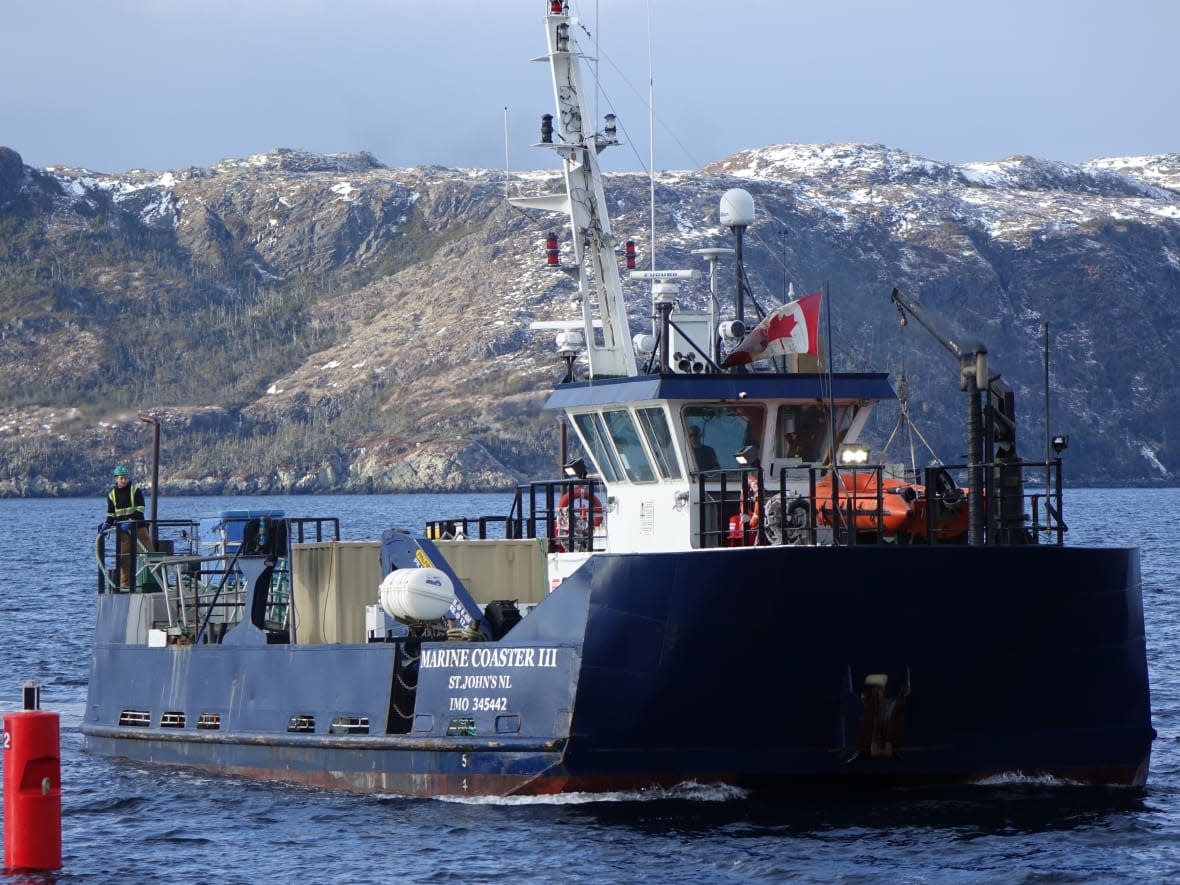Spike in ferry trips with zero passengers on south coast

Five ferries on Newfoundland's south coast are making fewer trips, and more of those crossings have no passengers.
Data obtained from the Department of Transportation and Infrastructure show the Gaultois-McCallum-Hermitage ferry made 1,012 one-way trips with no passengers in 2020-21, mostly to McCallum — a 26 per cent increase over the previous year.
On the Rencontre East-Bay L'Argent-Pool's Cove route, the ferry made 391 trips with no passengers aboard, a 34 per cent jump. Runs without passengers on the La Poile-Rose Blanche ferry nearly doubled, from 45 to 84, over the same period.
No-passenger trips were up 60 per cent on the Francois-Grey River-Burgeo ferry, increasing from 174 to 279. The ferry service in South East Bight recorded 296 trips with no one except the crew, up 22 per cent from 243 the year before.
The five ferry services accounted for about 2,060, or 59 per cent, of the more than 3,500 no-passenger trips taken by the province's 12 intraprovincial ferry routes in 2020-21. While the other ferry services also recorded trips with zero passengers last year, the number of passengerless trips they made went down during the pandemic.
The data for the five south coast ferries are also particularly striking given that overall, Newfoundland and Labrador ferries made about 7,000 fewer trips in 2020-21, as the pandemic forced cuts to schedules. Total trips dropped from 37,500 to 30,800.
How to explain the numbers?
Transportation and Infrastructure Minister Elvis Loveless said pandemic restrictions on travel and population decline in rural communities are the main culprits for the increase in trips without passengers on the south coast.
"COVID-19 certainly played a role in ferry traffic," Loveless said. "When you have a reduction in the population in communities, then the likelihood is you're going to see a reduction in traffic."

McCallum mayor Everett Durnford said ferries often make runs with multiple stops where individual legs are empty. He also said ferries transport emergency vehicles, and even when no passengers are aboard, the boats may carry freight or mail.
"During the fishery season, there might not be any passengers on that boat, but in these communities there could be $50,000 worth of lobster going down there and another 10,000 or 15,000 halibut or other ground fish. And every drop of fuel that's burned here is shipped on that ferry," Durnford said.
'We have to change'
Loveless warned against equating cutting trips with fixing ferry services.
"If you're going to reduce runs, you know, there is a savings of fuel money, but we still have staff that are servicing these vessels," he said.
But he said "joint solutions" on ferries, created in consultation with affected communities, will be announced "in the coming weeks."
"We have to change. There will be change coming in," he said.
Two transportation ministers ago, now-Tourism Minister Steve Crocker made a similar promise, when CBC/Radio-Canada reported provincial ferries had made 4,100 trips with no passengers in 2019-20. At the time, Crocker said residents should expect cuts where ferry schedules didn't line up with demand.
Loveless said he was "reluctant to put a timeframe on it because if I don't meet that target, then it becomes a story."
"I don't want that for the people who are in these communities. I don't want to play up the fear factor of giving them a timeframe that this is going to happen," he said.
Fare increase on the horizon?
While the total number of trips made by the province's 12 ferry services decreased 18 per cent in 2020-21, operating costs were relatively the same, dropping just 3 per cent to $79 million.
After the government brought in pandemic restrictions on ferry occupancy, ticket sales in 2020-21 fell to $4.9 million, down from $7.3 million the year before.
Durnford said he doesn't understand why ticket prices cover just a fraction of ferry costs — between three and six per cent for the south coast runs — and believes residents would be prepared to pay more, if it means avoiding cuts to service.
"If they want to recover more money, I mean, I can go to Hermitage for $3.75. In this day and age, that's ridiculous. No, I don't want to pay more, but I think people would rather pay more than lose any more services," said Durnford, noting that since the pandemic began, a ferry visits his town of 30 people just 5 days a week, rather than every day.
Loveless said the government is considering increasing ticket fees, but didn't give further details. Finance Minister Siobhan Coady announced a review of ferry services in the last provincial budget.
Loveless said that review is ongoing.

 Yahoo Movies
Yahoo Movies 
